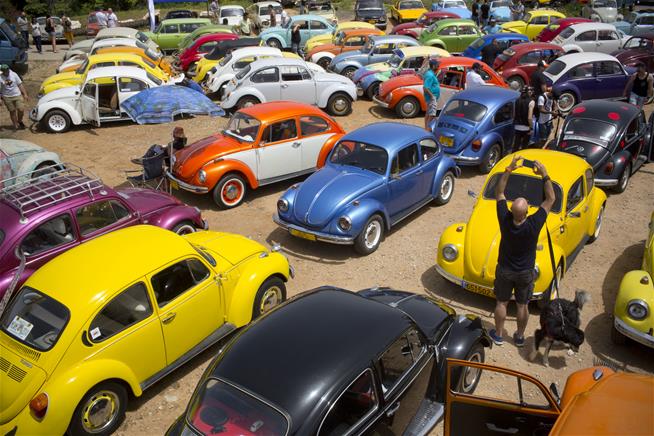
Volkswagen is halting production of the last version of its Beetle model this week at its plant in Puebla, Mexico. It’s the end of the road for a vehicle that has symbolized many things over a history spanning eight decades since 1938, the AP reports. It has been: a part of Germany’s darkest hours as a never-realized Nazi prestige project. A symbol of Germany’s postwar economic renaissance and rising middle-class prosperity. An example of globalization, sold and recognized all over the world. An emblem of the 1960s counterculture in the United States. Above all, the car remains a landmark in design, as recognizable as the Coca-Cola bottle. The car’s original design—a rounded silhouette with seating for four or five, nearly vertical windshield and the air-cooled engine in the rear—can be traced back to Austrian engineer Ferdinand Porsche, who was hired to fulfill Adolf Hitler’s project for a “people’s car” that would spread auto ownership the way the Ford Model T had in the US.
Mass production of what was called the KdF-Wagen, based on the acronym of the Nazi labor organization under whose auspices it was to be sold, was cancelled due to World War II. Later re-launched as a civilian carmaker under supervision of the British occupation authorities, the Volkswagen factory was transferred in 1949 to the Germany government and the state of Lower Saxony, which still owns part of the company. By 1955, the millionth Beetle—officially called the Type 1—had rolled off the assembly line in what was now the town of Wolfsburg. Production there ended in 1978 as newer front drive models like the Golf took over. But the Beetle wasn’t dead yet. Production went on in Mexico, where the car, nicknamed the “vochito,” made itself at home as a rugged, Mexican-made “carro del pueblo.” The last of 5,961 Final Edition versions of the Beetle is headed for a museum after ceremonies in Puebla on Wednesday to mark the end of production.
